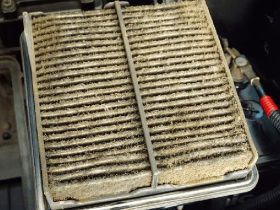A compression test is one of those things every mechanic should be familiar with and is one of the go-to tests for a myriad of automotive problems.
Doing a basic cylinder compression test is a simple, straight-forward procedure. You can do it in four steps with only basic hand tools and a compression gauge like the one shown here.
A healthy engine will have a compression of at least 100 psi per cylinder and variations between cylinders will be no more than about ten percent between highest and lowest. Exact numbers will depend on your engine type, vehicle make, and the specifications for it. Your shop manual or repair manual for the car will have specifics.
Many mechanics do a compression test with every spark plug change as a way to keep tabs on engine health during a maintenance interval that coincides with the procedure for testing compression.
Setting Up a Compression Test
Begin by removing the fuses for the fuel pump (and possibly the injectors) to disable fuel delivery during the test. Disconnect the spark wires at source, the main wire to the coil(s), or the distributor cap (whatever is easiest) to disable spark delivery.
Once you’ve disabled fuel and spark, you’re ready to begin conducting cylinder tests. You’ll need access to the spark plugs and their holes once they’ve been removed as well, so remove the air cleaner, intake manifold, etc. as required.
Compression Testing
Remove the plugs individually or all at once (one at a time is best, minimizing risk of debris in the cylinders). Thread the compression gauge hose into the spark plug hole by hand (no tools).
Turn on the ignition, press the throttle, and crank the engine for at least four revolutions. You’re looking for a stable reading on the gauge, so crank up to ten times each try until you get one.
Record the reading and cylinder position. Many mechanics record the results in chalk on the valve cover above the cylinder as they go. This is a good, quick way to make the recording, but it should be transferred to a more permanent medium later. Replace the spark plug (if doing one at a time) and move on to the next cylinder and repeat the process.
Once all cylinders have been tested and the results recorded, you’re finished testing.
Looking At the Results
If you record your own maintenance work on the vehicle, make sure that the compression test results are included in that maintenance record. Over time, you may be able to see a trend in compression loss as rings, valve seats, etc. begin to deteriorate.
Your compression levels should be within about ten percent of the recommended level for your vehicle’s engine. In addition, there should be no more than ten percent variance between all of the cylinders when compared to one another AND there should not be more than ten percent gain or loss over the last check.
So, a typical compression test on an i4 engine may result in cylinder readings (going from 1 to 4) of: 104, 103, 101, 105. These are within range of the engine’s specifications, within ten percent of one another, and have acceptable variance.
If one cylinder is far lower than the others, you likely have a valve seat, seal, piston ring, or similar breach. Engine cracks, chips in cylinder heads, and a lot of other things can also be indicated. Other symptoms and tests will help pinpoint the problem.






